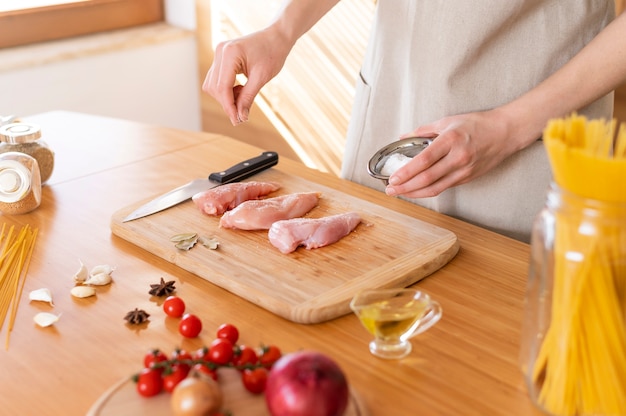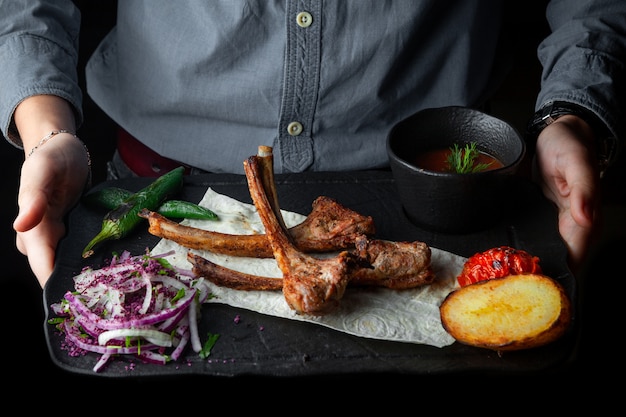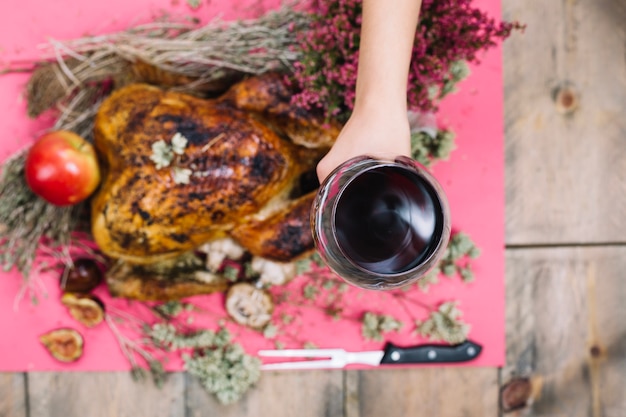(Part 1) Choosing the Right Cut: A Porky Adventure

The first step to any delicious roast is selecting the right cut of meat. Now, when it comes to pork, I'm a big fan of the shoulder – it's my go-to, and for good reason. But let's explore some other options, shall we?
Shoulder: The Classic Choice
The shoulder is a classic for a reason. It's got that perfect balance of fat and lean meat, which means it's super juicy and tender. Plus, it's the best cut for getting that incredible crackling. It’s a bit of a workhorse though, as it's got a bit more bone in it than other cuts. But honestly, that just adds to its character!
Loin: The Lean and Tender Option
If you're looking for something a bit leaner, the loin is a fantastic choice. It's a very tender cut, perfect for those who prefer a more delicate flavour. Just remember, it's a bit more delicate than the shoulder, so you'll need to keep a close eye on it while it's cooking.
Belly: The Fat Lover's Delight
Now, this is where we're talking serious flavour! The belly is all about the fat, and I mean a lot of it. This means it renders down into a super juicy and flavourful piece of meat, but it's not for the faint of heart. It's also the king of crackling – you'll be amazed by how crispy it gets!
Other Cuts: A World of Possibilities
Of course, there's a whole world of other cuts out there, like leg, loin chops, and even pork fillet. They all have their own unique characteristics and can be delicious when cooked correctly. But for this guide, we're sticking to the classics – shoulder, loin, and belly – because they are truly the backbone of any roast pork experience.
(Part 2) Prepping for Perfection: The Art of Preparation

You've chosen your cut – now it's time to give your pork the royal treatment. A few simple steps can make all the difference in achieving that perfect roast.
Scoring the Skin: The Key to Crackling
This is where the magic really begins! We need to score the skin to create that glorious crackling. Using a sharp knife, make shallow cuts about 1 cm apart across the entire surface of the skin. Don’t worry about cutting all the way through the fat – we just want to score the top layer. This allows the fat to render down evenly and creates those irresistible crispy bits.
Seasoning with Salt: The Crackling’s Best Friend
Salt is the true hero when it comes to crackling. It draws out moisture and helps to create that crispy texture. Don't be shy, give the skin a generous rub with salt, making sure you get into those scores. You can also add other spices, like black pepper, garlic powder, or even paprika, but remember, the crackling is the star of the show, so keep the seasonings simple.
Massage, Massage, Massage: The Secret to Tenderness
This is the part that sounds a bit odd, but trust me, it makes a world of difference. Give your pork a good massage! This helps the seasonings penetrate and ensures that the fat is evenly distributed. I prefer to use a clean kitchen towel for this – just wrap the pork in the towel and give it a good rub. It also helps to dry out the skin, which is crucial for that crispy crackling.
(Part 3) Cracking the Code: Unveiling the Secrets of Crackling

Let’s get down to brass tacks: the crackling. It's the holy grail of roast pork, the moment of truth, and it takes a bit of know-how to get it perfect.
Dry Skin, crispy skin: The Importance of Moisture
The key to incredible crackling is a dry, dry, dry skin! That's why we scored and rubbed it down earlier. The goal is to remove as much moisture as possible to encourage that irresistible crisp texture.
The Oven's Role: High Heat for a Head Start
Now, let's unleash the power of the oven. Preheat it to a high temperature, around 220°C (425°F), and pop in your pork. This initial high heat is crucial to getting the crackling started.
The Fat Factor: Rendering Down to Deliciousness
As the pork cooks, the fat will start to render down, creating steam. And this is where things get interesting! The steam is what can make the crackling soft and soggy, so we need to deal with it.
Lowering the Heat: The Crucial Step
After about 30 minutes, lower the oven temperature to about 160°C (325°F). This slows down the cooking process, allowing the fat to render down without producing too much steam.
The Basting Ritual: Adding Flavor and Moisture
Towards the end of cooking, you can baste the pork with its own juices. This helps to keep the meat moist and adds a beautiful depth of flavour. Just be careful not to splash any of the juices onto the skin – you want to keep it dry to maintain that crackling.
(Part 4) The Rest is Golden: A Time for Patience
Your roast pork is looking magnificent, but it's not quite ready for carving yet! It's important to let it rest for at least 15 minutes, and even longer is better, to allow the juices to redistribute throughout the meat.
Resting: The Secret to Tenderness and Juiciness
Resisting the urge to dive in is a true test of culinary willpower, but it’s absolutely crucial. Resting allows the juices to redistribute evenly throughout the meat, ensuring that it's succulent and tender. It also allows the crackling to crisp up even further.
The Timing Game: A Few Minutes for Perfection
I usually aim for around 20-30 minutes of resting time. It’s a bit of a waiting game, but it’s a delicious one! While you're waiting, you can prep your sides, make your gravy (we'll get to that soon!), and get your carving knife ready for the grand finale.
(Part 5) Carving and Serving: The Triumphant Moment
The moment has finally arrived – it's time to carve that beautiful roast pork! This is a bit of a performance, so make sure you have a sharp carving knife and a good, sturdy cutting board.
The Carving Technique: Slice Against the Grain
Start by cutting along the bone, then slice the meat against the grain. This ensures that you get nice, tender slices. Remember to leave a bit of crackling on each slice, and try not to break it up too much. We want to showcase that crispy perfection!
Presentation Matters: A Feast for the Eyes
Don’t be afraid to get creative with your presentation! You can arrange the slices on a platter, or even stack them like a mini-tower. Add some sprigs of rosemary or thyme for a touch of elegance. And, of course, don't forget the gravy!
The Perfect Sidekicks: A Symphony of Flavors
Roast pork is a versatile dish, and it goes beautifully with so many sides. Here are some of my personal favourites:
- roast potatoes: A classic combination that never fails.
- Apple sauce: The sweetness of apple sauce balances out the richness of the pork perfectly.
- Sage and onion stuffing: A comforting and flavourful addition.
- green beans: Fresh and crisp, they add a touch of lightness to the meal.
- yorkshire puddings: A true British staple, perfect for soaking up all the delicious juices.
(Part 6) Gravy Time: The Finishing Touch
No roast pork is complete without a rich and flavorful gravy. It's the perfect way to soak up all those delicious juices and add another layer of flavour to your meal.
Pan Drippings: The Secret Ingredient
The key to a great gravy is using the pan drippings from the roast. They're packed with flavour, so don't waste them! Just be sure to remove any excess fat before you start making your gravy.
The Basic Technique: A Simple But Delicious Gravy
I prefer a simple gravy made with flour, stock, and the pan drippings. Start by making a roux by whisking together equal parts flour and butter in the roasting pan. Then gradually whisk in your stock, and bring the mixture to a simmer.
Season with salt and pepper to taste, and then simmer for a few minutes to allow the flavours to develop. You can add other ingredients, like herbs, garlic, or even a splash of red wine, to your gravy. Just experiment and find what you like best.
Tips for a Perfect Gravy: Mastering the Art
Here are a few tips for making a gravy that’ll make you feel like a master chef:
- Use a good quality stock: This is the foundation of your gravy, so don't skimp on the quality.
- Don't overcook the roux: It should be smooth and golden brown, not burnt.
- Strain the gravy before serving: This will remove any lumps and ensure a smooth, velvety texture.
(Part 7) roast pork recipes: Time to Put Your Skills to the Test
Now it’s time to put your knowledge to the test! I'm going to share two of my favourite roast pork recipes. Remember, these are just starting points – feel free to experiment and add your own personal touch.
Classic Roast Pork with Apple Sauce: A Timeless Favorite
This recipe is a classic for a reason – it's simple, delicious, and perfect for any occasion.
Ingredients
- 1.5 kg pork shoulder
- 2 tablespoons sea salt
- 1 tablespoon black pepper
- 1 onion, chopped
- 2 carrots, chopped
- 2 celery stalks, chopped
- 500 ml chicken stock
- For the apple sauce:
- 2 apples, peeled and chopped
- 1 tablespoon butter
- 2 tablespoons brown sugar
- 1 tablespoon lemon juice
Instructions
1. Preheat oven to 220°C (425°F).
2. Score the skin of the pork shoulder, and rub with salt and pepper.
3. Place the pork in a roasting pan, and add the onion, carrots, and celery around it.
4. Roast for 30 minutes, then reduce the oven temperature to 160°C (325°F).
5. Roast for a further 1.5-2 hours, or until the pork is cooked through.
6. While the pork is resting, make the apple sauce:
7. Melt the butter in a saucepan, and add the apples, brown sugar, and lemon juice.
8. Cook over a low heat for 10-15 minutes, or until the apples are soft and mushy.
9. Mash the apples with a fork, and season with salt and pepper to taste.
10. Serve the roast pork with apple sauce and your favourite sides.
Honey Garlic Roast Pork with Crispy Crackling: A Sweet and Savory Treat
This recipe is for those who like a bit more flavour and sweetness. The honey and garlic glaze creates a sticky and delicious coating, while the crackling is perfectly crispy.
Ingredients
- 2 kg pork belly
- 3 tablespoons sea salt
- 2 tablespoons black pepper
- 1 tablespoon garlic powder
- For the glaze:
- 1/2 cup honey
- 1/4 cup soy sauce
- 2 tablespoons garlic, minced
- 1 tablespoon ginger, grated
Instructions
1. Preheat oven to 220°C (425°F).
2. Score the skin of the pork belly, and rub with salt, pepper, and garlic powder.
3. Place the pork belly in a roasting pan, and roast for 30 minutes.
4. Reduce the oven temperature to 160°C (325°F).
5. Make the glaze by combining the honey, soy sauce, garlic, and ginger in a small bowl.
6. Brush the glaze over the pork belly, and roast for a further 1.5-2 hours, basting occasionally.
7. Remove the pork belly from the oven, and let it rest for 15-20 minutes before carving.
8. Serve with your favourite sides.
(Part 8) FAQs: Your Roast Pork Questions Answered
Now, I know you might have a few questions about roast pork, so let's tackle some of the most common ones.
1. How do I know when my roast pork is cooked through?
The best way to check is with a meat thermometer. The pork should be cooked to an internal temperature of 145°F (63°C). You can also check for doneness by piercing the meat with a fork. If the juices run clear, it's cooked through.
2. What if my crackling doesn't crisp up?
If your crackling isn't crispy, it's probably because the skin wasn't dry enough before cooking. Try drying it out further with a hairdryer or patting it dry with a kitchen towel. You can also try scoring the skin more deeply, or even rubbing it with salt before roasting.
3. Can I make roast pork ahead of time?
Yes, you can cook roast pork ahead of time and reheat it. Just make sure you let it cool completely before storing it in the fridge. When you're ready to reheat, put the pork in a preheated oven at 160°C (325°F) for about 30 minutes, or until it's heated through. You can also reheat it in the microwave, but this may make the crackling soggy.
4. What can I do with leftover roast pork?
Leftover roast pork is a delicious treat! You can use it to make sandwiches, salads, or even stir-fries. It's also great for making pork pie or pork and apple sausages. Get creative!
5. Can I freeze roast pork?
Yes, you can freeze roast pork, but it's best to freeze it before you reheat it. Just wrap it tightly in plastic wrap or aluminum foil, and freeze for up to 3 months. When you're ready to use it, thaw the pork in the refrigerator overnight, and then reheat it in the oven or microwave.
And there you have it! Your complete guide to creating a perfect roast pork. Remember, practice makes perfect, so don't be afraid to experiment and find what works best for you. And most importantly, enjoy the process! Happy roasting!
Everyone is watching

How to Cook Frozen Lobster Tails Perfectly: A Step-by-Step Guide
RecipesLobster. Just the word conjures up images of lavish meals, special occasions, and a taste of luxury. But let's...

Pigs in a Blanket Cooking Time: How Long to Bake for Perfect Results
RecipesAh, pigs in a blanket. Just the name conjures up images of those delightful little parcels of crispy pastry en...

Pork Fillet Cooking Time: How Long to Cook It Perfectly
RecipesPork fillet, or tenderloin as it's sometimes called, is a real favourite in our house. It's so versatile, and...

The Ultimate Guide to Tender, Juicy Pulled Pork
RecipesRight, let's talk pulled pork. It's one of those dishes that just screams "comfort food," doesn't it? I mean...

The Ultimate Guide to Cooking Sweet Potatoes: From Roasting to Mashing
RecipesSweet potatoes. Just the name conjures up images of warm, comforting dishes, bursts of vibrant color, and a to...
